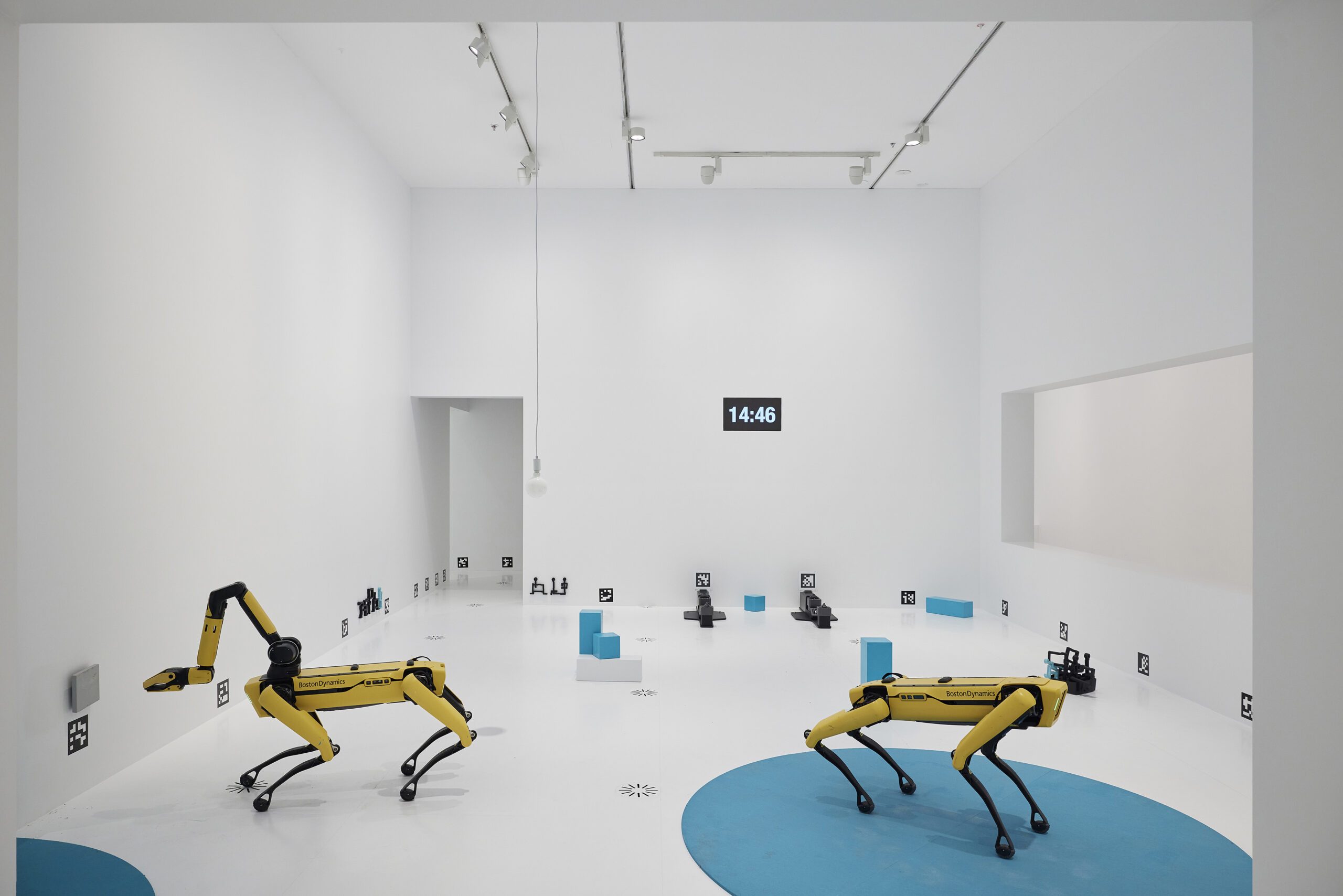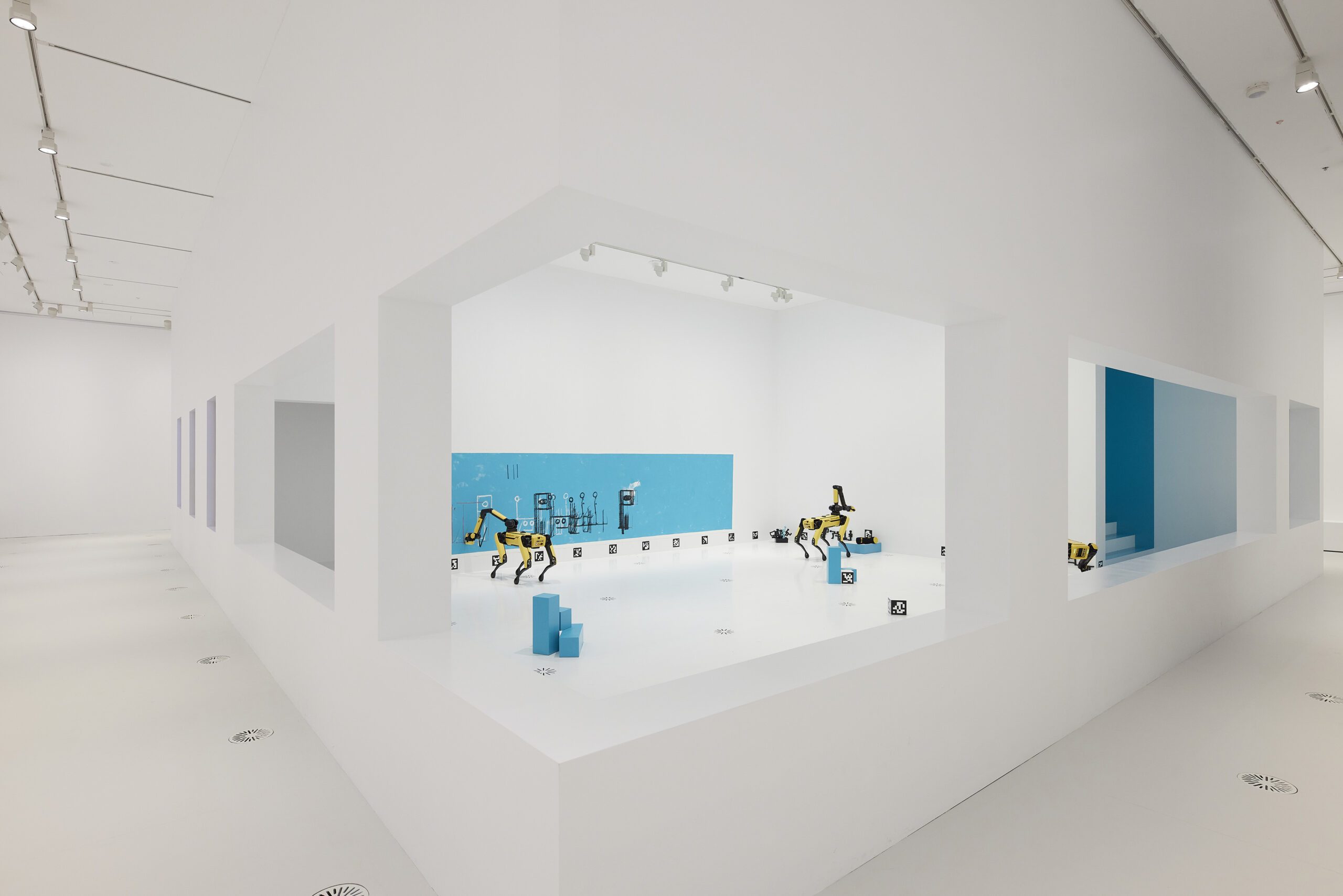
images courtesy Agnieszka Pilat, used with permission
The Boston Museum of Fine Arts (MFA) recently hosted an extraordinary event as part of its “Late Nites” series, captivating audiences with a unique blend of art and technology. On May 10th, the museum presented “Heterobota: The Language of Tomorrow,” featuring the innovative work of Polish-American artist Agnieszka Pilat, in collaboration with Boston Dynamics’ robotic dogs.
Agnieszka Pilat, renowned for her exploration of the relationship between humans and machines, showcased an interactive performance where two of Boston Dynamics’ Spot robots, named Basia and Omuzana, autonomously painted in front of a live audience. This groundbreaking exhibit marked the first live presentation of these robotic artists since their return from a successful stint in Australia.

The performance, presented in partnership with Boston Dynamics and Hyundai Motor Company, challenged traditional notions of art and creativity. Pilat reflected on the challenges she faced, particularly her non-engineering background and the need to embrace the robots’ limitations. “The challenge in using these robots as artists comes from accepting their limitations. Instead of trying to have the robots paint in a way that seems ‘perfect’ for a human, I decided to embrace the limitations of the robots. The result was surprisingly meaningful. I guess I let the robots do their own thing!”

Despite initial hurdles, Pilat was impressed by the robustness and unique style of the robotic paintings. She highlighted the robots’ endurance during their exhibition in Australia, noting, “At the National Gallery of Victoria, we had them working every single day for 8 hours, and on certain days, up to 12 hours without any maintenance. I am in awe of how robust they are, their longevity, and how self-reliant these machines are.”
The artist also found a surprising connection between the robotic art and early human communication. “The style of the painting and how mechanical limitations resulted in a language that is very unique to these robots was surprising. Their art is strangely ‘human.’ In that sense, the work they created feels like an attempt at communication with humans, reminiscent of the cave drawings of our ancestors.”
Pilat admitted to personifying the robots, with Basia becoming her favorite. “Basia is the painter, the artist in the pack, and her only task was to paint. She was the least engaged with the public, slow and deliberate in her work. She is the one that belongs to me, while the other two robots were on loan from Boston Dynamics.”
The MFA’s “Late Nites” event not only showcased Pilat’s innovative approach to art but also highlighted the evolving intersection of technology and creativity. Through the autonomous creations of Basia and Omuzana, Pilat’s work invites audiences to reconsider the boundaries of artistic expression and the role of technology in shaping our cultural future.
Read more:
- Have you Met Spot®? Robot from Boston Dynamics Takes the Floor at AUVSI Xponential 2021
- Automating Reality Capture on Job Sites with Drones, Ground Robots, and More: Users Perspective
- AFWERX Awards Contract for ASYLON DroneDog Security Robot System
Miriam McNabb is the Editor-in-Chief of DRONELIFE and CEO of JobForDrones, a professional drone services marketplace, and a fascinated observer of the emerging drone industry and the regulatory environment for drones. Miriam has penned over 3,000 articles focused on the commercial drone space and is an international speaker and recognized figure in the industry. Miriam has a degree from the University of Chicago and over 20 years of experience in high tech sales and marketing for new technologies.
For drone industry consulting or writing, Email Miriam.
TWITTER:@spaldingbarker
Subscribe to DroneLife here.